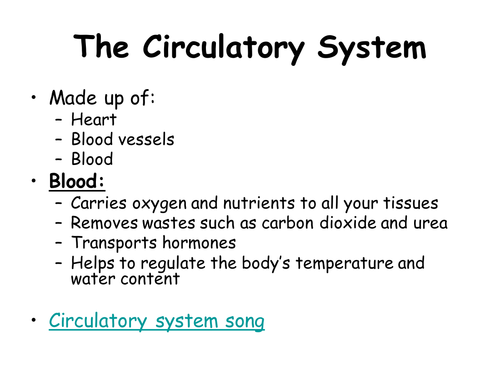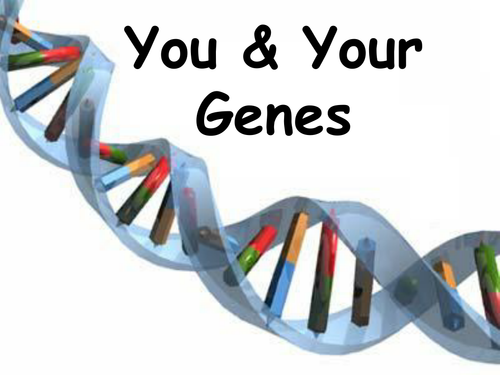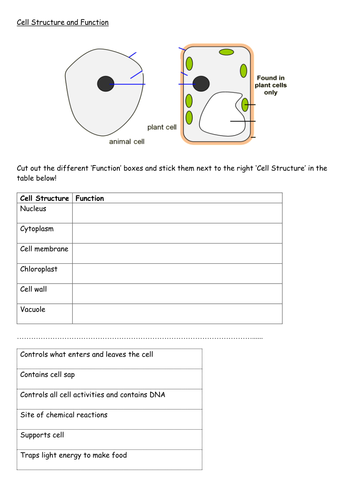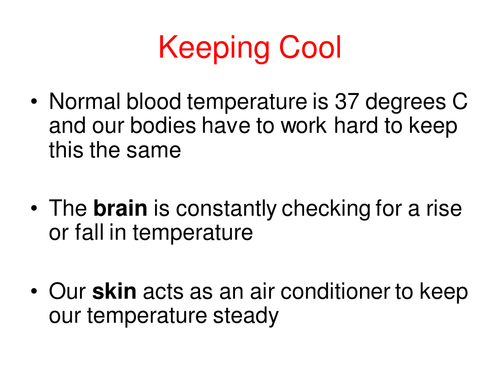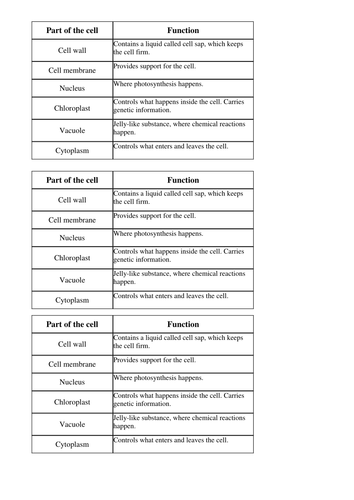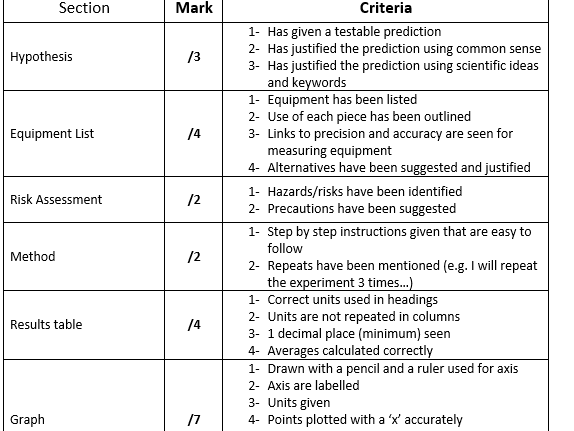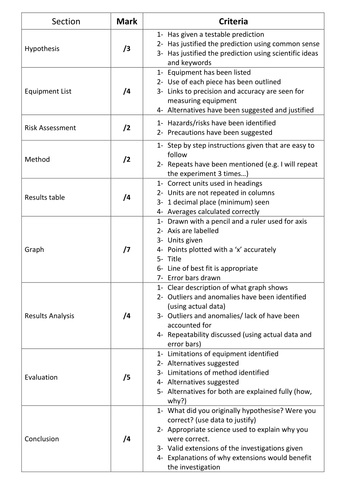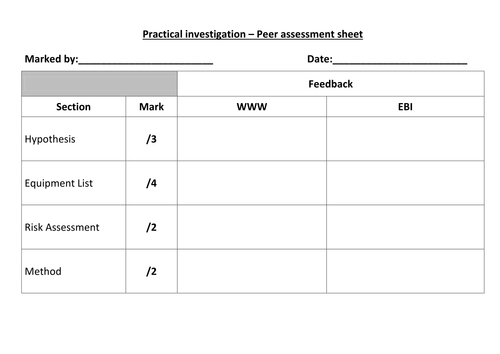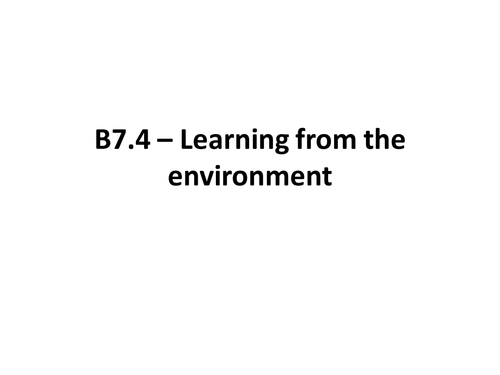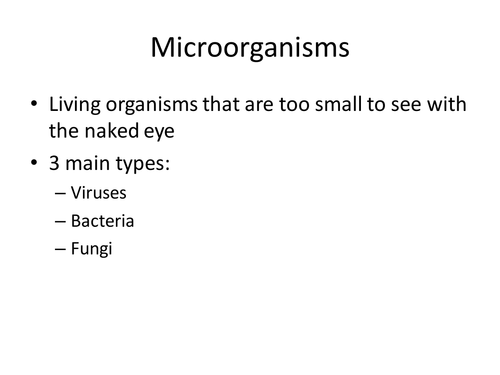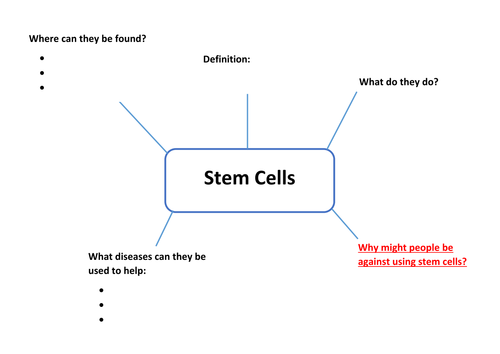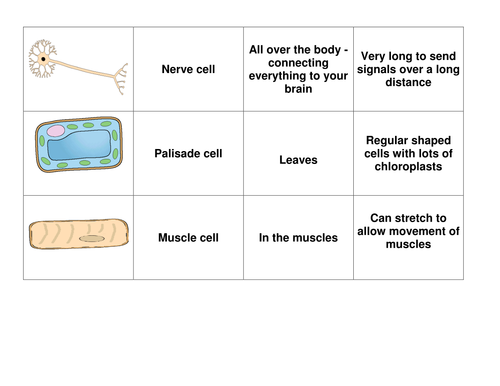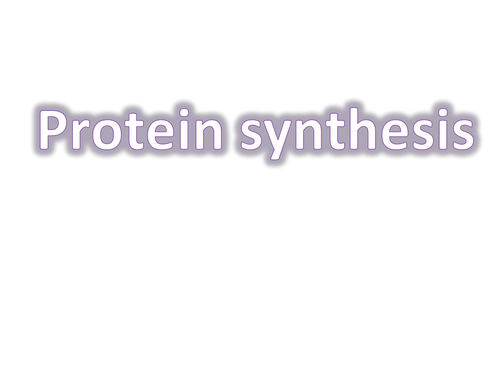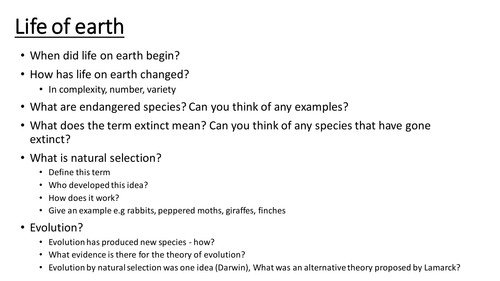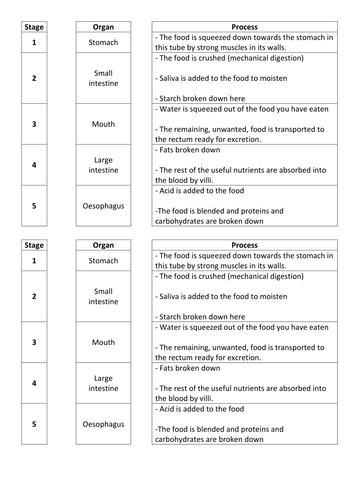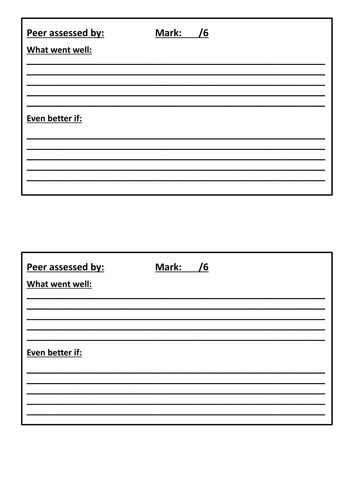
91Uploads
54k+Views
3k+Downloads
Biology

Carrying out a suitability test - thermometer.
Includes an experiment brief and assessment criteria. Based on old applied science GCSE, can be used to support students with their experiment write up skills.
Write up sections:
Title page
Contents page
Introduction
Desirable properties
Risk assessment
Procedure
Results
Evaluation
Conclusion
Bibliography

Circulatory System
explain what is meant by a double circulatory system
2. understand that the blood carries glucose molecules and oxygen to the muscles, and waste products such as carbon dioxide away from muscles
3. relate the components of the blood to their functions, including:
a. red blood cells – transport oxygen
b. white blood cells – fighting infections
c. platelets – blood clotting at injury sites
d. plasma – transporting nutrients (e.g. glucose and amino acids), antibodies, hormones and waste (carbon dioxide and urea)
4. understand how red blood cells are adapted to their function, limited to:
a. packed with haemoglobin (to bind oxygen)
b. no nucleus (more space for haemoglobin)
c. biconcave shape (increased surface area for oxygen exchange)
5. describe and name the main structures and blood vessels of the heart including the left and right atria and ventricles, vena cava, aorta, pulmonary vein, pulmonary artery, coronary arteries and valves
6. describe the function of valves in the heart and veins
7. understand how tissue fluid is formed in capillary beds and that it assists the exchange of chemicals by diffusion between capillaries and tissues, to include oxygen, carbon dioxide, glucose and urea.

Genes and Cloning revision
What are genes and how do they affect the way that organisms develop?
Why can people look like their parents, brothers and sisters, but not be identical to them?
How can and should genetic information be used? How can we use our knowledge of genes to prevent disease?
How is a clone made?

Coursework graph drawing and results analysis
Coursework graph drawing and results analysis - linked to assessment criteria

Cell Structure and Function Starter - Year 7
Cell Structure and Function Starter - Made for year 7 but can be used with any KS3
Bundle

Experiment Write up support
Assessment criteria/ checklist specific to experiment write ups
Peer assessment sheets to use alongside. Pupils can then give specific WWW and EBI points.

Experiment write up - Assessment criteria
Students to have a laminated copy of this while completing an experiment write up.
Could be used alongside the peer assessment sheet where students can rpovide formative feedback to each other and areas for improvement.

Practical investigation - Peer assessment sheet
Could be printed out on coloured paper to stick into student books

Stem Cells - word map
Stem Cells - word map. Support students to understand the term/summarise the keyword. Particularly useful with SEN students.

Life on Earth project - (Evolution and Natural Selection)
Questions to guide students through independent learning project on life on earth.
Including:
Complexity
Extinction
Natural selection
Evolution
Could be used as a homework project or computer room lesson.

Digestive System- starter/plenary
Digestive System Match up activity. Great starter/Plenary
Stage --> Organ --> Process

Extended response question - peer assessment sheet
Extended response question - peer assessment sheet



